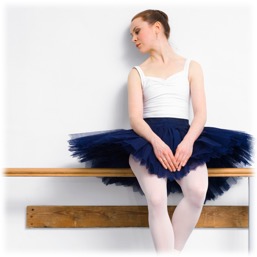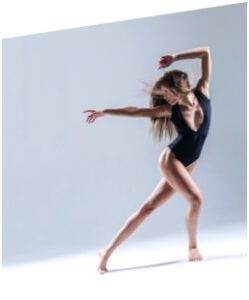BEYOND THE DANCER’S BODY
Please note: This article was originally published in The Magazine 1/2019.
“You can’t judge a book by its cover” yet in the dance world, too often a dancer is judged by their physique, which can result in major physical and mental health consequences. In the same way that the true quality of a book is better determined by elements such as its plot, characters and language, so too, we need to look beyond physical traits in order to uncover and develop the real artist within.

Uncover beliefs: The first thing we need to do if we want to look beyond the dust cover of the body is to become aware of our own beliefs and biases about dancers’ bodies that subtly steer our attitudes and behaviour. To uncover some of your own beliefs and biases, finish these sentences: “An ideal body for dance is…” “Dancer’s bodies need to look…” “Dancers without an ideal body are…” We need to honestly reflect on how accurate/beneficial these beliefs are and be willing to adapt to more nurturing mindsets for the sake of ourselves and the dancers around us.
Practice compassion: Instead of perpetuating body dissatisfaction and shame, learn how to quiet your inner critic and extend care, kindness and compassion toward yourself and others (particularly in relation to any perceived physical flaws). Compassion not only helps you handle stress better, it has also been linked with positive body image and eating behaviour.[1] See yourself, the dancers around you and ALL bodies as deserving of kindness, respect and acceptance.
Focus on effort: Focussing on physique in the dance studio not only increases the likelihood of body image concerns and can trigger eating disorders,[2] it also gets in the way of producing confident, competent dancers. We know from research into mindsets that when we focus on inherent traits like physical talent, we instil fixed mindsets, causing people to play it safe rather than fully extend themselves.[3] Develop a growth mindset by focussing instead on the effort put in, persistence, technical development, performance skills, growing kinaesthetic awareness and developing emotional maturity.

Use mirrors sparingly: there are a LOT of reasons not to rely on mirrors in the dance studio: reduced kinaesthetic awareness, reduced ability to learn and retain exercises, incorrect head alignment, and of course an over-focus on appearance and physical comparisons. While mirrors do play a role in dance training, utilising them as tools in specific instances whilst regularly working without a mirror assists with transitioning to stage and exam settings and could also improve body image.[4]
Dare not to compare: everyday most dancers are bombarded by images of other dancers’ (often seemingly perfect looking) bodies in the studio and on social media and it is very easy to fall into the trap of negatively comparing yourself, leaving you feeling discouraged and inadequate. Learn to recognise the moods and settings that easily trigger comparing for you, find ways to soothe yourself when you’re feeling vulnerable and refocus onto something more constructive.
Given the many side-effects of an over-focus on physique in the dance-world, it is time we stop looking at the cover and start reading the book.
 Philippa is a Counsellor with 9 years of experience supporting dancers and performing artists to thrive in the industry. She helps dancers and teachers build confidence and positive mindsets through her online programs at Stageminded.com. Philippa is also School Counsellor and Performance Psychology Teacher at The Australian Ballet School.
Philippa is a Counsellor with 9 years of experience supporting dancers and performing artists to thrive in the industry. She helps dancers and teachers build confidence and positive mindsets through her online programs at Stageminded.com. Philippa is also School Counsellor and Performance Psychology Teacher at The Australian Ballet School.
[1] Braun, T.D., Park, C.L., Gorin, A. (2016). Self-compassion, body image, and disordered eating: A review of the literature. Body Image 17 (2016), 117–131.
[2] Arcelus, J., Witcomb, G. L., Mitchell, A. (2014). Prevalence of Eating Disorders amongst Dancers: A Systemic Review and Meta-Analysis. European Eating Disorders Review, 22, 92–101.
[3] Blackwell, LS., et al. (2007) Implicit theories of intelligence predict achievement across an adolescent transition: A longitudinal study and an intervention, Child development. 2007 Jan-Feb;78(1):246-63.
[4] Radell, S.A., Adame, D.D., Cole SP, Blumenkehl, N.J. The impact of mirrors on body image and performance in high and low performing female students. J Dance Med Sci. 2011;15(3):108-15.